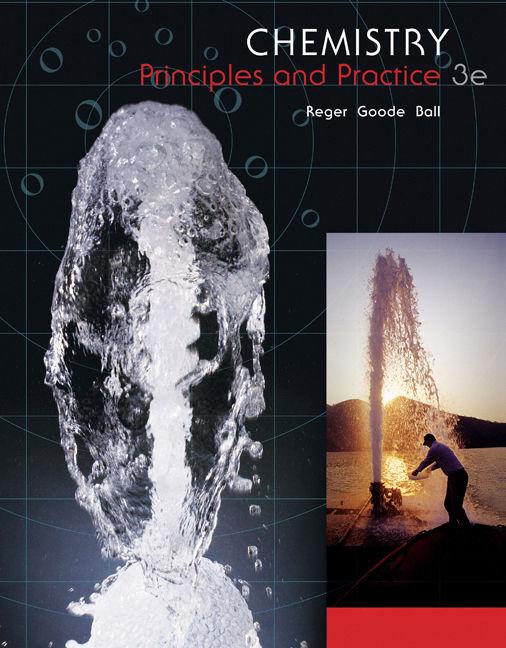See Exercise 5.104 for a description of the law of Dulong and Petit. (a) Experimentally, the
Question:
See Exercise 5.104 for a description of the law of Dulong and Petit.
(a) Experimentally, the specific heat of a metal is found to be 0.460 J/g · °C. Use the law of Dulong and Petit to calculate the approximate atomic mass of the metal.
(b) A chloride of this element is 67.2% chlorine by mass. Use the molar mass of 35.45 g/mol for chlorine and the approximate atomic mass found in part (a) to determine the subscripts x and y in the formula of the chloride, MxCly. (Th e mole ratio of the elements you fi nd will not be exactly whole numbers, so considerable rounding may be needed to obtain whole numbers in the formula.)
(c) From the formula established in part (b), x mol M is combined with y mol Cl. Calculate the mass of the metal that is combined with y mol chlorine, using the percent composition of the chloride, and find the atomic mass of the metal. What is the element M?
Exercise 5.104
The law of Dulong and Petit states that the heat capacity of metallic elements is approximately 25 J/mol · °C at 25 °C. In the 19th century, scientists used this relationship to obtain approximate atomic masses of metals, from which they determined the formulas of compounds. Once the formula of a compound of the metal with an element of known atomic mass is known, the mass percentage composition of the compound is used to find the atomic mass of the metal. The following example shows the calculations involved.
Step by Step Answer:

Chemistry Principles And Practice
ISBN: 9780534420123
3rd Edition
Authors: Daniel L. Reger, Scott R. Goode, David W. Ball





